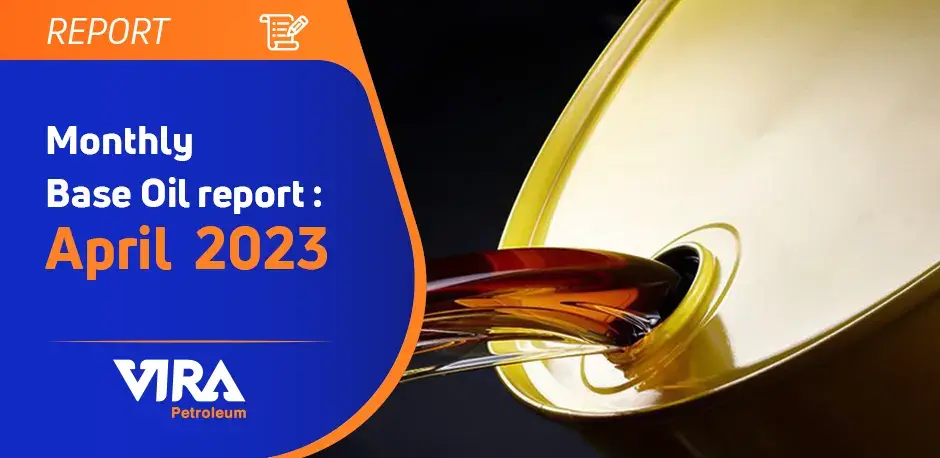In contrast to previous years, base oil demand remained subdued in March and early April, leading up to the spring production cycle when blenders typically stock up on lubricants for the summer driving season.
The sluggish market conditions were attributed to macroeconomic factors, and some buyers held off on purchasing additional volumes in anticipation of potential base oil price decreases. The uncertainty surrounding volatile crude oil and feedstock prices further contributed to consumer caution.
Order : recycle base oil

Base Oil Price Reductions Amid Crude Oil Surge: Chevron, SK, and Motiva Respond
Chevron and SK enmove responded to the situation by announcing price decreases in late March, aiming to stimulate orders and address the sluggish demand. The decision was influenced by softer crude oil values and increasing inventories of paraffinic oils.
Chevron and SK Reduce Base Oil Prices, While Crude Oil Price Surge Slows Adjustments. Chevron implemented price reductions of 30 cents per gallon on its API Group II 100R, and 40 cents per gallon on its 220R and 600R grades. Similarly, SK lowered the posted price of its Group III 4-cSt grade by 15 cents, and its Group III 6-cSt and 8-cSt cuts by 20 cents per gallon, effective from April 1.
However, crude oil prices surged by nearly 6% following OPEC+’s announcement of a significant production cut, which slowed down base oil price adjustments. Nonetheless, Motiva joined the trend by announcing price decreases in early April, including a retroactive decrease of 30 cents per gallon on its API Group II 105-vis base oil and a 40 cents/gal reduction on its 220-vis and 600-vis grades. Additionally, the company lowered its Group II+ and III base oils by 25 cents/gal.
Order : base oil sn 150
Price Strategies & Supply Dynamics: Avista Reduces Base Oil Prices
Effective April 11, Avista Refining and Trading implements 30 cents/gal price drop on Group II+ and III base oils.
Instead of reducing posted prices, suppliers opted for temporary value allowances and adjustments to stimulate domestic orders, as well as lower spot prices to attract export business. The Group I segment was characterized as balanced-to-tight, with limited spot availability and prices holding steady or slightly softening.
A Group I refinery’s turnaround in March likely contributed to the tightening supply. In the Group II segment, there were discussions of granting temporary value allowances (TVAs) ranging from 30 to 85 cents per gallon to certain accounts. These TVAs came as a slight surprise since Group II supply was expected to tighten due to an extended turnaround at the Excel Paralubes facility in Lake Charles, Louisiana.

Plant Shutdowns and Turnarounds Impact Group II Base Oil Supply
Due to technical issues, the resumption of production at a plant was delayed by two weeks, extending the shutdown period beyond the end of March. Chevron had also planned a turnaround at its Group II plant in Pascagoula, Mississippi, during the second quarter, and they were stockpiling inventories to meet demand during the outage. Additionally, a Group II + Group III rerefiner completed a one-week shutdown in mid-March.
Despite these turnarounds, Group II supplies were able to meet demand, given the subdued domestic requirements and limited buying interest from other regions. However, once both plants resumed production at full capacity, a significant influx of Group II base oils was expected, which could exert additional pressure on pricing.
Refiners were closely monitoring diesel prices as well. If diesel prices rose alongside crude oil values, refiners might redirect feedstocks to prioritize distillates production instead of base oils. Such a shift could affect the supply/demand balance of base oils and prompt buyers to secure their product to avoid potential shortages in the future.
read more : Applications of Base Oil
Group III Segment Lengthens as Global Supplies Increase
The Group III base oil segment witnessed a lengthening in supply. The rise in domestic production of Group III base oils contributed to the surplus availability of imports. Some suppliers responded by granting temporary value allowances (TVAs) of 20-40 cents per gallon, while others refrained from price adjustments, anticipating a tightening in the segment. They predicted that demand would pick up, and plant turnarounds in Asia and Europe would limit global supplies in the coming months.
Naphthenic Base Oil Market Dynamics
In the naphthenic base oil market, downward price pressure was partially offset by higher crude oil and feedstock values in early April. Most pale oils were described as balanced in terms of supply and demand, although there was an excess of lighter grades. Interest from Latin America and Europe helped alleviate some of the inventory pressure.
Both paraffinic and naphthenic base oil suppliers in the United States actively pursued export opportunities. Many lowered their spot offers to stimulate business, particularly in Mexico, Brazil, and other Latin American countries.
Currently, there are few indications of a turnaround in base oil orders. Economic factors such as inflation, recession concerns, and rising labor and transportation costs may impact base oil and lubricant consumption in the coming months. The approaching hurricane season in the Atlantic basin, starting in June, could prompt buyers to increase inventory levels to mitigate potential supply disruptions. This could potentially reinvigorate demand and reverse the concerning trend observed over the past few months.
source:
www.lubesngreases.com

